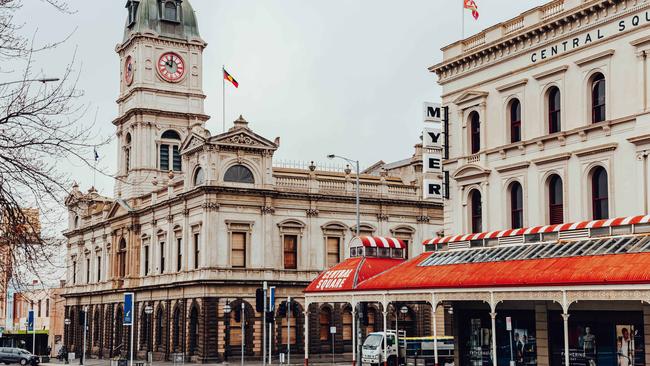Regional Victorian housing proving to be in demand, despite pandemic
The growing number of people working from home is expected to drive demand for houses in regional Victoria, which has seen prices rise 1.9 per cent this year.

REGIONAL cities are already preparing for an influx of home buyers, and COVID will just accelerate the trend.
According to property data company CoreLogic, regional housing markets have maintained strong prices and demand, countering the pandemic drops experienced in urban centres.
CoreLogic’s September Home Value Index showed prices in regional Victoria were up 1.9 per cent year to date, while Melbourne prices fell 1.9 per cent over the same period.
CoreLogic head of research Tim Lawless said regional market strength was due to the appeal of the low density and lower price points, as well as less reliance on overseas migration.
“Unlike their capital city counterparts, which usually receive 85 per cent of net overseas migration, most regional markets have avoided the drop in demand caused by the pause in migration,” Mr Lawless said.
HAVE YOUR SAY: Would you considering moving to the country if you could work from home? Tell us in the comments section below
Regional Victoria’s median home value at the end of August was $393,569, while Melbourne was $667,520.
Figures to the end of July showed Ballarat enjoyed the strongest selling conditions across the nation, with homes selling in just 30 days and with minimal discounting levels, while the Illawarra region of NSW recorded both the largest rise in housing values, as well as the biggest jump in home sales over the past 12 months.
Urban Development Institute of Australia Victoria chief executive Danni Hunter said Australians’ new-found work location priorities could transform the decision about where to live.
“The possibility of working from home on a more regular basis will certainly get people thinking about whether they want to live in metro Melbourne, or whether they would prefer a slower pace of life in our regional areas,” she said.
“We expect that areas outside metro Melbourne, but still within commute range will see increased demand – places like the Macedon Ranges, Warragul, Ballarat and Geelong.”
Bendigo-based developer Damien Tangey of Birchgrove Property said regional cities had traditionally seen 2-3 per cent annual growth, with the exception of Geelong, which was experiencing “almost metropolitan levels of activity”.
He said government stimulus measures and the nation’s transition to a new COVID-normal way of life would likely buoy that rate in regional centres.
“You already have a distinct advantage of availability, access and the intimacy of your living environment,” Mr Tangey said, explaining the natural appeal of the less-densely populated cities. “Regional centres are now delivering genuine masterplan opportunities.”
Bendigo, he said, had a strong supply of three and four-bedroom houses, with new house-and-land packages averaging $400,000-$450,000 for “turnkey” products.
He said there had been no drop in demand since COVID hit.
“Have actually seen the opposite,” he said, citing the State Government’s first homeowner grant and Federal Government’s home-builder programs as impetus to buy.
“A new homeowner in the appropriate income bracket can receive $45,000. The result is that we have had a significant amount of interest in our products.”


